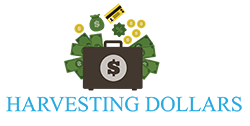Smart Ways to Manage Debt Without Compromising Your Savings
Debt can feel like a heavy weight on your shoulders. It’s easy to get lost in the stress of monthly payments, interest rates, and looming deadlines. But what if managing that debt didn’t mean sacrificing your savings? Many people believe they must choose between paying off what they owe or building their financial future and that’s simply not true. In reality, with smart strategies and a proactive mindset, you can tackle both goals simultaneously. Let’s explore some effective ways to manage debt while still prioritizing your savings. You’ll learn how understanding your financial landscape is the first step toward achieving balance in your life. So grab a cup of coffee and let’s dive into some practical tips that can help you regain control over your finances without compromising on saving for tomorrow’s dreams.
Understanding Your Debt: Types and Interest Rates
Debt comes in various forms, and understanding these types is crucial for effective management. Common categories include credit card debt, student loans, personal loans, mortgages, and auto loans. Each has its own characteristics and implications. Interest rates play a significant role in how much you pay over time. Fixed-rate loans maintain the same interest rate throughout their term, providing predictability. Variable-rate debts can fluctuate based on market conditions, potentially increasing your payment amounts unexpectedly.

Creating a Budget: Balancing Debt Payments and Savings Goals
Creating a budget is essential for managing both debt and savings effectively. Start by listing all your income sources. Knowing how much you have coming in helps set the stage. Next, outline your fixed expenses like rent, utilities, and groceries. These are non-negotiable items that must be covered first. Once you’ve accounted for these basics, it’s time to tackle your debts. Allocate a portion of your income specifically for monthly payments on loans or credit cards.
Utilizing Balance Transfer Options
Balance transfers can be a smart way to manage high-interest debt. By moving your balances from higher-rate credit cards to one with a lower interest rate, you could save significant money over time. Many credit card companies offer promotional rates for balance transfers sometimes as low as 0% for an introductory period. This gives you breathing room to pay down the principal without accruing more interest. However, it’s essential to read the fine print. Some cards charge transfer fees or have terms that could lead you back into expensive territory if you’re not careful.
Negotiating With Creditors for Lower Interest Rates
Negotiating with creditors can feel daunting, but it’s a powerful tool in managing your debt effectively. Most creditors prefer to work with you rather than lose money to defaults. Start by gathering information about your account. Know your current interest rates and payment history. This data empowers you during negotiations. Next, approach the conversation calmly and confidently. Explain any financial hardships you’re facing while expressing your commitment to repay the debt.
Cutting Expenses to Increase Debt Payments and Savings
Finding ways to cut expenses can significantly impact your financial health. Start by reviewing your monthly bills. Identify subscriptions or services you rarely use and eliminate them. Next, consider meal planning. Eating out adds up quickly, so preparing meals at home not only saves money but also promotes healthier eating habits. You’ll be surprised how much you can save by avoiding takeout. Also, think about transportation costs. Carpooling or using public transit can reduce fuel expenses and wear on your vehicle.
Seeking Professional Help: The Benefits of Financial Planning Services
Navigating debt can feel overwhelming. This is where financial planning services come into play. Professionals in this field bring a wealth of knowledge and experience to the table. They help you assess your current situation, providing personalized strategies that take both your debts and savings into account. A tailored plan can clarify priorities, helping to balance immediate needs with long-term goals. Moreover, these experts often have access to resources and tools that individuals may not readily find on their own. They can evaluate various options like payment plans or investment opportunities suited for your unique circumstances.
In Conclusion
Managing debt while maintaining your savings can feel like a balancing act. However, with the right strategies in place, it is entirely achievable. Start by understanding the types of debt you have and their respective interest rates. This knowledge will empower you to prioritize repayments effectively. Creating a budget that accommodates both your debt payments and saving goals is essential. By tracking your expenses and income, you’ll find ways to allocate funds accordingly.






 When you first start using a credit card, keeping track of your purchases is essential. It can be easy to lose track of how much you’ve spent when everything is just a swipe away. By tracking your purchases, you’ll have an idea of where your money is going and how much you’re spending. One way to do this is by checking your account regularly. Most credit cards have online portals or apps that allow users to monitor their transactions in real time. You can also set up alerts for specific amounts or categories of spending. Another option is to use budgeting tools that automatically categorize transactions from multiple accounts into one dashboard so that you can see all your expenses in one place.
When you first start using a credit card, keeping track of your purchases is essential. It can be easy to lose track of how much you’ve spent when everything is just a swipe away. By tracking your purchases, you’ll have an idea of where your money is going and how much you’re spending. One way to do this is by checking your account regularly. Most credit cards have online portals or apps that allow users to monitor their transactions in real time. You can also set up alerts for specific amounts or categories of spending. Another option is to use budgeting tools that automatically categorize transactions from multiple accounts into one dashboard so that you can see all your expenses in one place. When using a credit card, paying on time is crucial. Your payment history makes up about 35% of your credit score, so even one late payment can negatively impact you. To avoid this, always pay at least the minimum amount by the due date. One way to ensure timely payments is to set up automatic payments through your bank or credit card issuer. This takes the stress out of remembering when your bill is due and ensures that you won’t miss any payments. If, for some reason, you’re unable to make a payment on time, contact your issuer as soon as possible. They can work with you on a payment plan or waive any fees associated with late payments.
When using a credit card, paying on time is crucial. Your payment history makes up about 35% of your credit score, so even one late payment can negatively impact you. To avoid this, always pay at least the minimum amount by the due date. One way to ensure timely payments is to set up automatic payments through your bank or credit card issuer. This takes the stress out of remembering when your bill is due and ensures that you won’t miss any payments. If, for some reason, you’re unable to make a payment on time, contact your issuer as soon as possible. They can work with you on a payment plan or waive any fees associated with late payments.

 The process of getting a house starts with finding the right one. In the past, that meant driving around looking for For “Sale” signs or working with a real estate agent. But now, you can easily find homes for sale online. You can use websites like Zillow to find houses in your price range and location, and you can even take virtual tours of some homes. This makes the process of buying a house much easier than it was in the past. So, if you’re thinking about buying a house, 2022 is the year to do it. You’ll be able to get a great deal on a home, and you’ll be getting in on the market just as it’s heating up. With technology making everything easier, there’s no reason not to buy a house in 2022. Thanks for reading.
The process of getting a house starts with finding the right one. In the past, that meant driving around looking for For “Sale” signs or working with a real estate agent. But now, you can easily find homes for sale online. You can use websites like Zillow to find houses in your price range and location, and you can even take virtual tours of some homes. This makes the process of buying a house much easier than it was in the past. So, if you’re thinking about buying a house, 2022 is the year to do it. You’ll be able to get a great deal on a home, and you’ll be getting in on the market just as it’s heating up. With technology making everything easier, there’s no reason not to buy a house in 2022. Thanks for reading.
 No matter how much money you make, it’s essential to save as much as you can. Celebrities are no exception. In fact, many of them are quite frugal when it comes to their spending.
No matter how much money you make, it’s essential to save as much as you can. Celebrities are no exception. In fact, many of them are quite frugal when it comes to their spending. One of the best pieces of advice that we can learn from celebrities is to invest in ourselves. This means investing in our education, health, and relationships. By doing so, we can improve our lives both professionally and personally. For instance, Oprah Winfrey has a net worth of over $400 million, but she still continues to invest in herself by attending seminars and taking courses. After all, why would you want to put everything than you have to?
One of the best pieces of advice that we can learn from celebrities is to invest in ourselves. This means investing in our education, health, and relationships. By doing so, we can improve our lives both professionally and personally. For instance, Oprah Winfrey has a net worth of over $400 million, but she still continues to invest in herself by attending seminars and taking courses. After all, why would you want to put everything than you have to?
 If you have multiple debts that you are struggling to keep up with, it may be time to consider a debt consolidation loan. However, you must pick from the best debt consolidation loan. This type of loan will allow you to pay off all of your outstanding debts and replace them with one single monthly payment.
If you have multiple debts that you are struggling to keep up with, it may be time to consider a debt consolidation loan. However, you must pick from the best debt consolidation loan. This type of loan will allow you to pay off all of your outstanding debts and replace them with one single monthly payment.  Creating a budget is an important thing you can do when you are trying to get out of debt. This will help you track your spending and see where your money is going. When you have a budget, you will be able to see what expenses are necessary and what expenses can be cut. This is an important step in getting out of debt. This can also help you stay on track with your monthly payments. This has been proven to be one of the most effective methods in getting out of debt. So, if you’re feeling overwhelmed by debt and don’t know where to start, consider these tips.
Creating a budget is an important thing you can do when you are trying to get out of debt. This will help you track your spending and see where your money is going. When you have a budget, you will be able to see what expenses are necessary and what expenses can be cut. This is an important step in getting out of debt. This can also help you stay on track with your monthly payments. This has been proven to be one of the most effective methods in getting out of debt. So, if you’re feeling overwhelmed by debt and don’t know where to start, consider these tips.

 The last mistake people make when repairing their credit is canceling credit card accounts. This may seem like a good idea, but it can actually hurt your credit score. When you cancel a credit card account, it can lower your credit utilization ratio, which is the amount of debt that you have compared to your available credit. People who do this often find that their credit score decreases, making it more difficult to get approved for loans and lines of credit. So, if you’re looking to repair your credit, be sure to avoid these things. Repairing your credit can be a long and arduous process, but it’s definitely worth it in the end. Following the advice in this blog post and avoiding the above mistakes will give you the best chance of repairing your credit as quickly as possible.
The last mistake people make when repairing their credit is canceling credit card accounts. This may seem like a good idea, but it can actually hurt your credit score. When you cancel a credit card account, it can lower your credit utilization ratio, which is the amount of debt that you have compared to your available credit. People who do this often find that their credit score decreases, making it more difficult to get approved for loans and lines of credit. So, if you’re looking to repair your credit, be sure to avoid these things. Repairing your credit can be a long and arduous process, but it’s definitely worth it in the end. Following the advice in this blog post and avoiding the above mistakes will give you the best chance of repairing your credit as quickly as possible.




 When looking for a personal loan, it is essential to compare the rates between different lenders. It will help ensure that you are getting the
When looking for a personal loan, it is essential to compare the rates between different lenders. It will help ensure that you are getting the  One of the dangers of getting a personal loan is that it can be easy to overspend. Just because you have extra money now doesn’t mean that you should go out and buy things that you don’t need. Try to stick to your budget as closely as possible so that you can pay off your loan as quickly as possible.
One of the dangers of getting a personal loan is that it can be easy to overspend. Just because you have extra money now doesn’t mean that you should go out and buy things that you don’t need. Try to stick to your budget as closely as possible so that you can pay off your loan as quickly as possible.



 When hiring a tax relief company, one of the crucial things you need to consider is customer service. In other words, customer service plays a significant role in the user experience and the services you expect to receive from an intended company.
When hiring a tax relief company, one of the crucial things you need to consider is customer service. In other words, customer service plays a significant role in the user experience and the services you expect to receive from an intended company.
 for investing in the stock market work in a very simple way. For each asset (market) the following aspects are indicated:
for investing in the stock market work in a very simple way. For each asset (market) the following aspects are indicated: must pay close attention to the signals you choose to trust; unfortunately, not all trading signals are good. Some signals make money, and others make you lose money. It will be important to select those of quality that can turn our operations into truly profitable investments.
must pay close attention to the signals you choose to trust; unfortunately, not all trading signals are good. Some signals make money, and others make you lose money. It will be important to select those of quality that can turn our operations into truly profitable investments.


 With these events, you would need a company that knows how to handle the circumstance. But since there are a lot of companies offering asset recovery, how do you know they are the right one for you? How would you know that they will do the task you paid them to do? Here are some of the things you should consider when choosing the perfect company for you to trust.
With these events, you would need a company that knows how to handle the circumstance. But since there are a lot of companies offering asset recovery, how do you know they are the right one for you? How would you know that they will do the task you paid them to do? Here are some of the things you should consider when choosing the perfect company for you to trust.

 barrier to entry into their financial markets will be lower compared to the past. Also, with equity tokens, it will make stock trading easily accessible to those average investors.
barrier to entry into their financial markets will be lower compared to the past. Also, with equity tokens, it will make stock trading easily accessible to those average investors. services. As an investor, you need the utility tokens to access these services. Also, it is crucial to understand that these tokens provide the holder with the chance to exist within that platform.
services. As an investor, you need the utility tokens to access these services. Also, it is crucial to understand that these tokens provide the holder with the chance to exist within that platform.